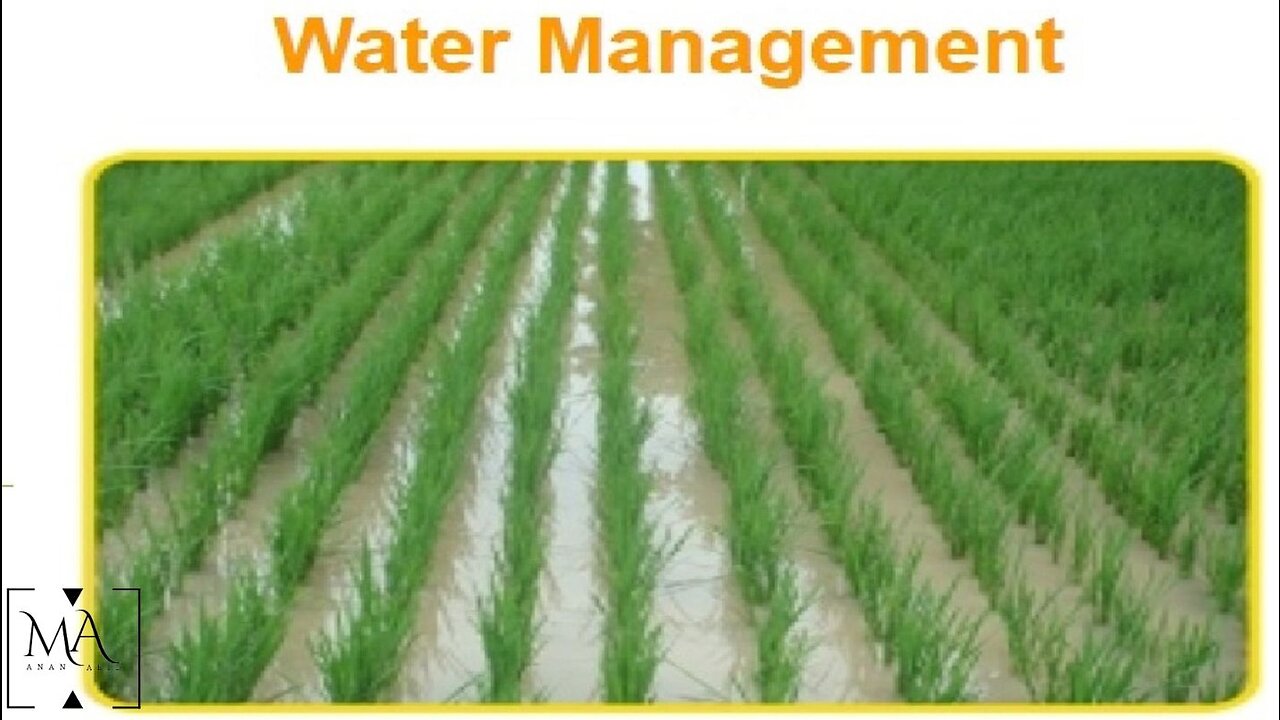Premium Only Content

When water should be dried in the Rice field
In rice cultivation, water management is crucial for successful growth. The timing of drying the rice field depends on the stage of rice growth and the specific cultivation method being used. Here are some key points to consider:
Initial Flooding: Rice fields are typically flooded after sowing the seeds. This flooded condition helps control weeds and pests. The water is usually maintained at a shallow depth (about 2-5 cm) during the early stages of germination and seedling growth, which lasts around 10-14 days.
Vegetative Stage: As the rice plants continue to grow, the water depth is gradually increased to provide sufficient moisture for the roots. During the vegetative stage, the water depth may range from 5-15 cm. This stage lasts until the plants develop their first panicle (flowering structure).
Reproductive Stage: Once the rice plants start flowering, the water depth is reduced to prevent lodging (falling over) of the plants due to the weight of the developing panicles. The water level is typically lowered to about 5-10 cm.
Ripening Stage: During the grain-filling stage (ripening), the water is further reduced or even completely drained, especially in modern rice cultivation practices. This helps the grains to mature and dry properly.
Harvest: Just before harvesting, the field is often completely drained to allow the rice plants to dry out and facilitate the harvesting process.
It's important to note that the exact timing of drying the rice field can vary based on factors such as the rice variety, climate, soil type, and local agricultural practices. Traditional methods may involve different water management approaches compared to modern, mechanized rice farming. Additionally, some rice varieties are specifically bred for upland or rain-fed conditions and may not require constant flooding.
-
 35:18
35:18
The Quiet Part
2 hours agoMAID Is Coming for the Mentally Ill — But This Could Change Everything
67 -
 LIVE
LIVE
LFA TV
15 hours agoLFA TV ALL DAY STREAM - MONDAY 8/25/25
4,696 watching -
 LIVE
LIVE
Surviving The Survivor: #BestGuests in True Crime
1 hour agoLIVE Court: Wendi Adelson Testifies Against Mom, Donna Adelson, in Dan Markel's Murder Trial
231 watching -
 LIVE
LIVE
JuicyJohns
2 hours ago $0.05 earned🟢#1 REBIRTH PLAYER 10.2+ KD🟢
98 watching -
 1:14:57
1:14:57
JULIE GREEN MINISTRIES
3 hours agoRUSSIA IS ABOUT TO RELEASE SOMETHING THAT WILL CRUSH THE ESTABLISHMENT
65.5K172 -
 LIVE
LIVE
GritsGG
2 hours agoWin Streaking! Coloring Hair at End of Stream! Most Wins 3435+ 🧠
31 watching -
 1:33:58
1:33:58
Welcome to the Rebellion Podcast
20 hours ago $0.03 earnedMonday Funday - WTTR Podcast Live 8/25
12.2K1 -
 1:21:24
1:21:24
Game On!
17 hours ago $0.06 earnedTom Brady And The Las Vegas Raiders ARE BACK! 2025 NFL Preview!
30.7K1 -
 4:01:45
4:01:45
The Bubba Army
3 days agoShould RaJa Jackson Be Arrested? - Bubba the Love Sponge® Show | 8/25/25
40.2K7 -
 LIVE
LIVE
FyrBorne
16 hours ago🔴Warzone M&K Sniping: Builds So Strong They Think I'm Hacking
178 watching